Game Development Reference
In-Depth Information
Basic Concepts
The fundamental relations that govern projectile flight can be found in Newton's laws of motion
and basic kinematics. To determine the linear motion of a projectile requires an evaluation of
the forces acting on the projectile. Generally speaking, projectiles will rotate as they fly through
the air, so the projectile motion will include both translational and rotational components.
Here are some general concepts to keep in mind that apply to all types of projectiles:
•
The translational acceleration of a projectile is determined from computing the net
external force on the object and applying Newton's second law,
F = ma
.
•
The translational velocity,
v
, and location,
s
, of a projectile as a function of time,
t
, can be
calculated from the differential equations for translational motion.
dv
=
a
(5.1)
dt
ds
=
v
(5.2)
dt
•
The rotational acceleration of the projectile,
, is determined by computing the net
torque on the projectile,
t
, the moment of inertia,
I
, and applying the equation
t
=
Ia
.
α
•
The equations of motion are separated into directional components. We will use the
Cartesian reference frame, so the force, acceleration, velocity, and position vectors will
be separated into x-, y-, and z-components.
In this chapter, we will use the convention that the z-axis is in the vertical direction with
the positive z-direction pointing upward from the surface of the ground. The x- and y-axes are
parallel to the ground. The coordinate system and frame of reference that will be used in this
chapter is shown in Figure 5-1.
z
x
y
Figure 5-1.
The projectile trajectory frame of reference
The Gravity-Only Model
The simplest projectile trajectory model is the
gravity-only
model in which the only force
acting on the projectile is due to gravity. This model is appropriate for projectiles that don't
travel very fast, don't spin rapidly, and aren't exposed to strong winds. For example, modeling
the flight of a basketball in an indoor gym would be an appropriate time to use the gravity-only
model. A force diagram for the gravity-only model is shown in Figure 5-2. The force of gravity,
F
g
, always acts in the vertical direction regardless of the direction of the velocity vector.




